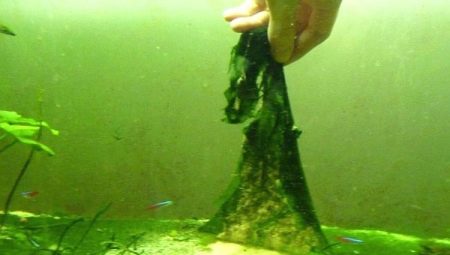Most aquarists are faced with the problem of the formation of blue-green algae in the aquarium. Parasitic vegetation not only spoils the appearance, but also harms the underwater inhabitants. In the article we will consider the causes of the formation of this phenomenon and methods of combating this parasite.
What it is?
Blue-green vegetation has many names. It is also called mucilaginous algae, phytochrome nodules, as well as cyanobacteria. Despite its outward resemblance to the underwater flora, in fact it is an accumulation of bacteria. Like other plants, these live through photosynthesis. Due to which they have a characteristic green color.
These are unicellular microorganisms that multiply rapidly and cause a lot of trouble for aquarists.
The color of algae can vary from light green to saturated and thick blue. Characteristic of them pungent odor and mucous structure. Bacteria cover not only the walls of the aquarium, but also the soil, plants, decorative elements and equipment placed under water.
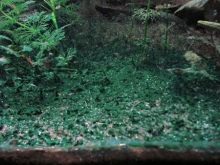
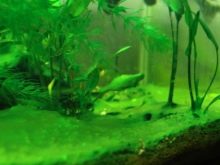
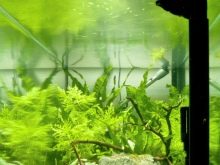
What harm do cyanobacteria do?
The first thing that both professional aquarists and amateurs note is the appearance of cyanobacteria negatively affects aesthetics. Given the fact that blue-green algae covers both the walls of the aquarium and the rest of its contents, the appearance deteriorates significantly.
With their appearance, the oxygen balance is disturbed.
Despite the fact that during the day, algae saturate the liquid with oxygen, with the sunset they begin to actively absorb this vital element.
Large submarines who need a lot of oxygen can suffer. In some cases, the death of fish is possible.
Do not forget that cyanobacteria multiply very quickly, so when they appear, you need to immediately take action.
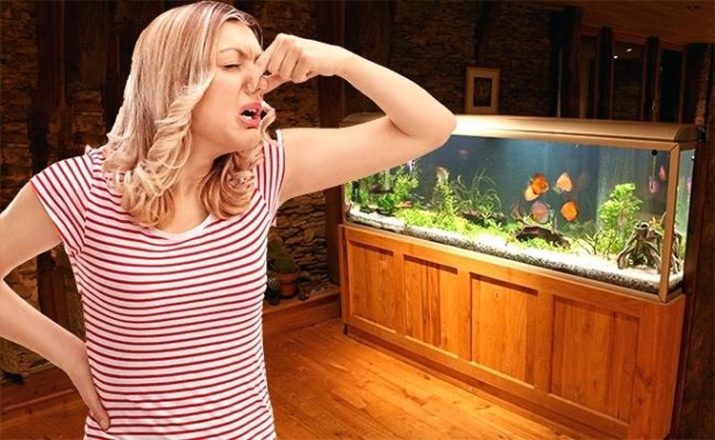
Why appear?
The reasons for the appearance of blue-green algae in the aquarium are many. It is one of the most common - the content in water of a large number of low molecular weight organic particles, for example, carbohydrate. But a large amount of organic matter accumulates when food remains in the water.
A low alkali content in the liquid (from 7.5 to 9.5 pH) also contributes to the formation of green mucus. Parasitic algae are hypersensitive to a certain number of trace elements. The list includes some types of metals, such as zinc, manganese, copper, iron and others. In the alkaline liquid, the desired concentration of the above elements is created. This is due to the fact that metal salts are poorly soluble in water. Such water destroys mucus algae.
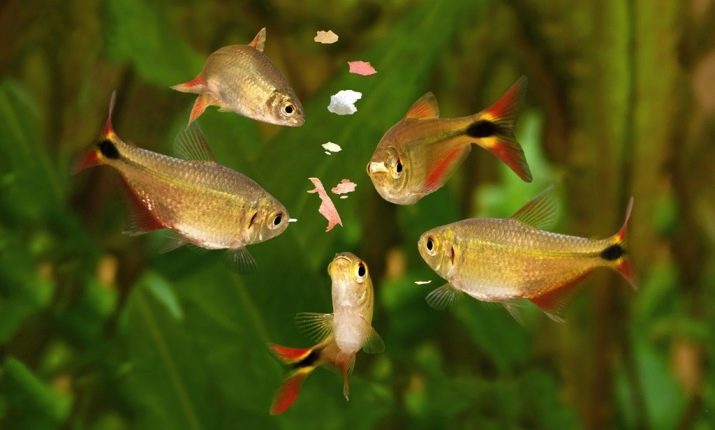
An insufficient percentage of oxygen in water can also cause bacteria to form. Another reason could be an increase in fluid temperature and a low redox potential. These conditions indicate serious violations of the ecological system in the aquarium.
Biogenic micronutrients, which include nitrogen, carbon and phosphorus, contribute to the rapid reproduction of phytochrome nodules.
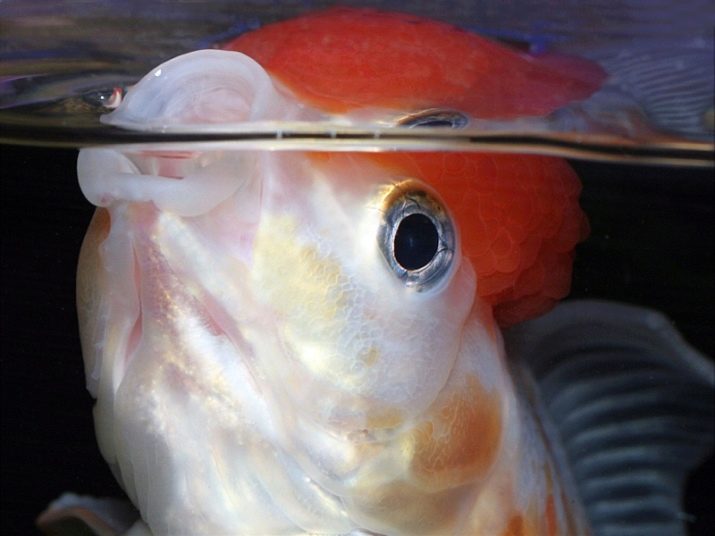
How to deal with the problem?
There are several ways to get rid of a parasite. Let us consider in more detail the most popular and common of them.
Mechanical cleaning
If you notice the appearance of blue-green mucus on the walls or anywhere else in the aquarium, urgently clean it. And to cope with the problem will help frequent loosening of the soil layer. You won’t be able to get rid of bacteria at one time, but thorough and regular cleaning will give a positive result.
Experts recommend carrying out work every day, and if possible several times a day. Be sure to rearrange the aquarium away from the window so that direct sunlight does not fall on it.
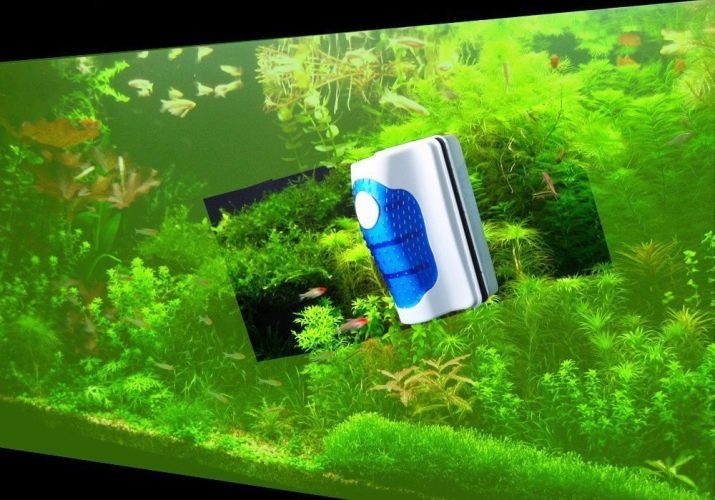
Antibiotics
Excellent result gives a biochemical method. In this case, effective medications are used, namely antibiotics. To get rid of algae, a medication is used. "Erythromycin."
This method is completely safe for humans and underwater inhabitants, but takes a lot of time and effort. You can find the right drug in almost any pharmacy at an affordable price. It is recommended that you choose the medicine in capsule format. It is more convenient to use than tablets.
The concentration of the substance is from 3 to 5 millimeters per liter of water (the weight of the antibiotic is indicated on the package, so it is not difficult to calculate the necessary proportion). Do not allow the drug to increase in the composition of the cleaning fluid. This will negatively affect the health of fish and underwater plants.
If the work is done correctly, the effect will be noticeable after 24 hours. After a day, the mucus algae will die. Even if small particles of algae remain, you should not worry. They will either be eaten by fish, or they will become a fertilizer for the flora.
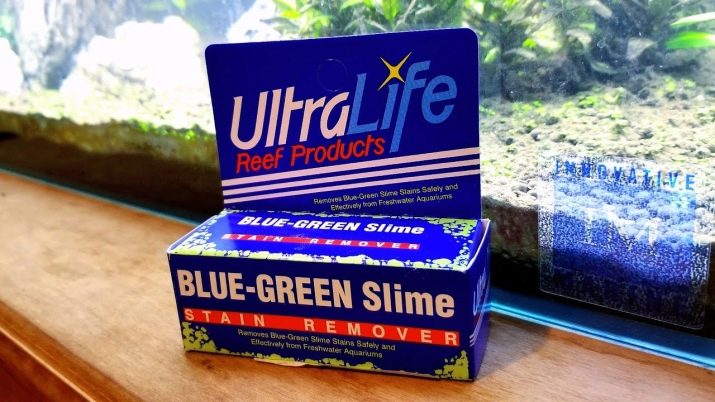
Hydrogen peroxide
Using a cheap tool, you can easily get rid of the parasite. Experienced aquarists recommend this method due to accessibility and excellent results.
When using this technique, transplanting of underwater inhabitants will not be necessary. A small amount of peroxide will not harm fish, snails, toads and others. It is important to correctly calculate the proportion. 25 milliliters of the drug are poured into an aquarium of 100 liters. It is necessary to add peroxide solution every day for three days in a row.
In most cases, on the third day, all the slimy algae will die off, and their remains can easily be removed from the aquarium. After cleaning, you need to change about 30% of the water.
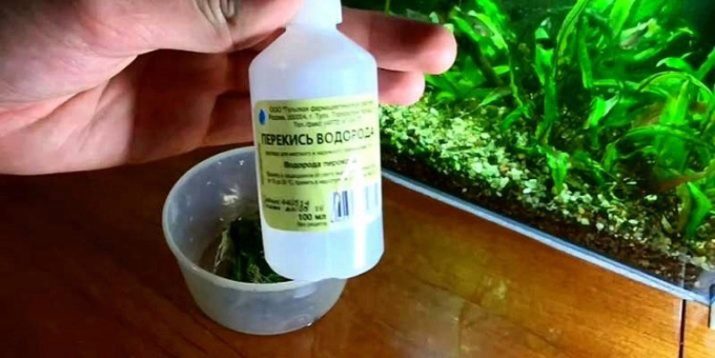
Flora
There are a number of plants that inhibit the reproduction of mucus. These include fast-growing algae. It is necessary to maximize their number and reduce the number of fish and other underwater inhabitants. As additional measures, you need to clean the soil every day and change 1/10 of the fluid in the aquarium. Under these conditions, cyanobacteria will die in a few weeks.
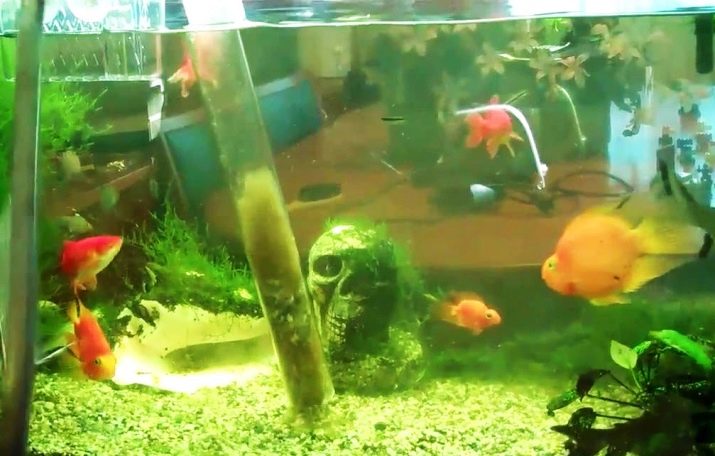
Insulation
The last method that we will consider is to isolate blue-green algae, depriving them of food sources. For this aquarium completely darken and shut off all maintenance equipment (filters, oxygen supply, etc.). Water is not changed until the mucus has completely disappeared. For this period, fish and valuable plants should be transferred to another container.
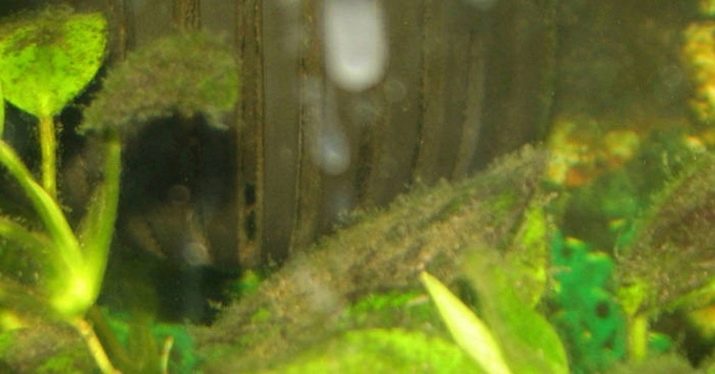
How to restore the aquarium environment?
When the work to eradicate the mucus is finished and the parasite is destroyed, you need to properly restore the aquarium. This will provide underwater inhabitants with comfortable conditions.
If the soil was removed during the destruction of cyanobacteria, it is necessary to fill it up again.
Use the same materials. Spread the soil evenly with a slight slope on one side. So fish waste will be collected in a corner without polluting the entire aquarium.

The next step is to return the plants to their place. First, the underwater flora is rooted, and then left for 24 hours for acclimatization. Carefully inspect the plants for particles of blue-green mucus.
After that you can return decorative elements: stones, figures, shells and other items. They should also be examined and make sure that the mucus has completely disappeared. We put everything in the aquarium and leave it for a day.
The last stage is to return the underwater inhabitants. Do not forget to turn on the equipment (lights, filters and much more).
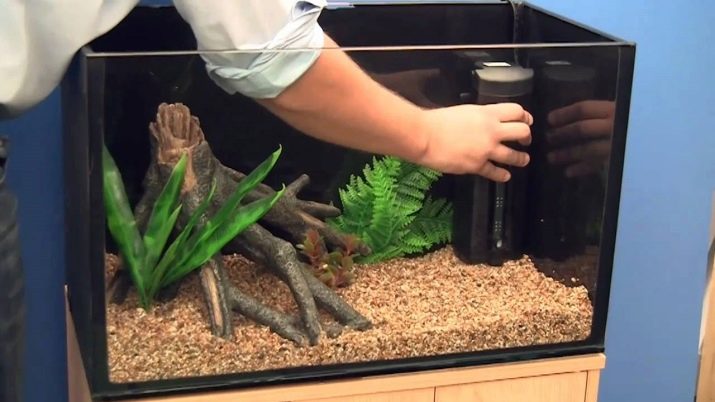
You can learn about how to get rid of algae from the video below.
